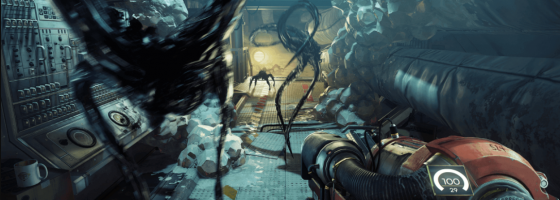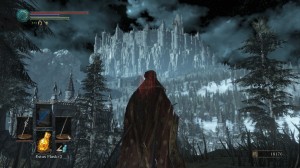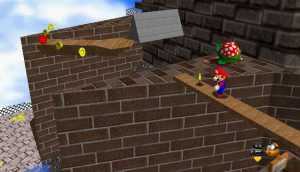Creating the game space for the player to explore is another aspect of game development that can prove daunting. Despite all the games we’ve played, it can be hard to actually break down what makes a good level or environment. For today, we’re going to try and shed some light on this topic, and explore how there is a difference between level design and environment design.
World Building:
Both terms “level design” and “environment design” are viewed as interchangeable by developers, but to be able to talk critically about games, I’m going to separate them.
Environmental design has become a major part of how game designers treat their game spaces over this decade. Some examples would be crafting decaying cities in the Souls series, to the original environment of Horizon Zero Dawn, and many more.
Environmental design is about the aesthetics, architecture, and in some cases the lore of the world. You’re not just building a crazy mix of platforms and rooms, but a coherent world that feels as alive (or dead) as possible. The rise of environmental design has gone hand-in-hand with the popularity of open-world games. Treating your game space this way had lead to some of the best titles released this decade.
With that said, there is one limitation that has reared its head. Games that focus on environmental design may be pretty to look at, but don’t offer much in terms of actual content. For that, we turn to level design.
Crafting the Challenge:
Level Design for our post will refer to the act of creating content with the explicit purpose to test the player. In this case, it’s the act of creating a challenge; be it through enemy placement, traps, or a specific test within the game space.
If we’re talking about open-world games, level design also refers to missions that lock the player in a specific area. The purpose of level design is to create situations within the environment. A popular term for this in open-world games is “points of interest.”
Typically, level design is hard-coded by the designer, with an obvious exception being Spelunky. As a designer, you’re thinking smaller than the full game space, but deeper in terms of the area that you’re working in. While environmental and level design work in tandem, it’s about two different goals.
Architect or Trap Maker?
For today’s video games, it’s not about viewing the design of your game strictly from an environmental or level design point of view, but combining them both. The goal is to create a game space that feels alive, but at the same time, there should be challenge within the world.
The example I have in mind today would be Blighttown from Dark Souls. From an environmental standpoint, Blighttown is a decaying shanty town with a giant poison lake at the bottom. The place is dirty, disgusting, and a place for the forgotten to live.
From a level design standpoint, Blighttown features several key aspects of challenge. You have moving between the different floors, enemies spitting poison darts, the dreaded elevator, and moving through the poison at the bottom.
In this way, Blighttown’s challenge felt like an organic growth from the environment the designers created.
Many open-world games tend to treat environmental and level design as two separate entities. You have the wide world where nothing really happens or challenges the player, and then the set missions or challenges that are engaging. There has been a push towards having an “AI Life” system or having the game generate situations to happen; either procedurally or random events.
This is not the same as having the game spawn situations around the player, but having them happen organically with or without the player’s involvement.
The point is that you need to think about things from both a world view and at the moment to moment layer in order to create an engaging game space.
The Best Worlds:
Games over this past decade have shown just how much thinking about a video game from an environmental and level design standpoint can elevate a game. If you want your game to stand out, you have to deliver on a beautiful-looking world that also has things to do in it. Creating great levels or game spaces takes a lot of work, and we’ll be talking about the key traits of that in an upcoming post.




